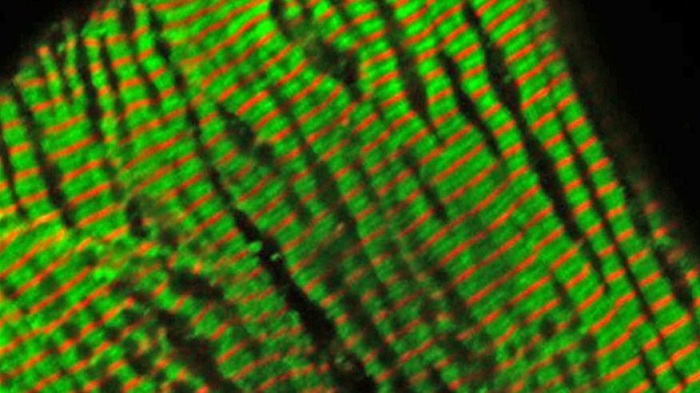Inherited cardiomyopathy, a genetically diverse group of heart muscle diseases, affects about one in every 500 people. HCM and DCM— the primary clinical diagnoses under this umbrella— involve nearly 1,500 different gene mutations in sarcomeres, which help the heart muscle contract and generate tension.
HCM is marked by heart muscle not relaxing normally, which can lead to an increased risk of sudden death from arrhythmia, while DCM is characterized by an enlarged left ventricular chamber and lengthened heart cells— which can cause systolic function to wane and eventually for the heart to fail.
Study authors analyzed the relationship between how sarcomeres generate tension and differences in calcium cycling. These two factors are altered in cardiomyopathy patients, and studying this effect can give doctors insight on how quickly the heart will evolve as disease progresses, Molkentin said.
Using normal mice, plus mice genetically engineered to have gene mutations associated with various cardiomyopathies, researchers analyzed calcium cycling rates and muscle tension generation. Next, integrating the overall tension produced by isolated cardiomyocytes, researchers came up with an algorithm that successfully predicted whether the mice would develop HCM or DCM.
In their study, published Thursday in the journal Cell, researchers reported that the mathematical model accurately predicted heart disease progression in both mouse models as well as donated stem cells from human cardiomyopathy patients. To analyze disease progression in the stem cells, researchers used induced pluripotent stem cell (iPSC) technology, which helps cells maintain the unique genetic makeup of the stem cells’ donor.
Researchers confirmed that their algorithm could predict which defect specific cardiomyopathy patients would develop by collaborating with scientists at the Stanford University School of Medicine.
The technology is years away from potential clinical use, researchers noted, as it requires further testing and refinement.
More about:
















































